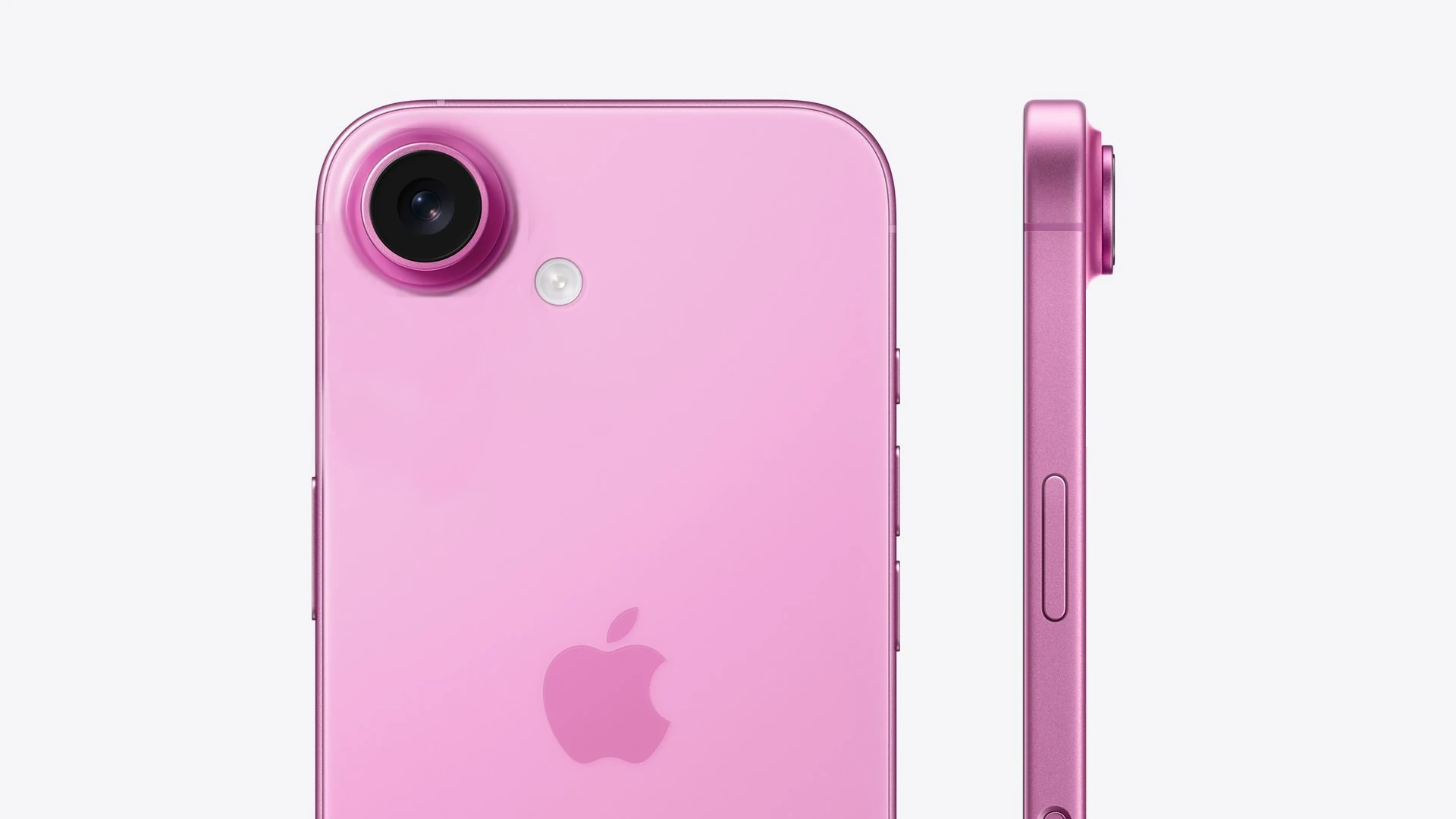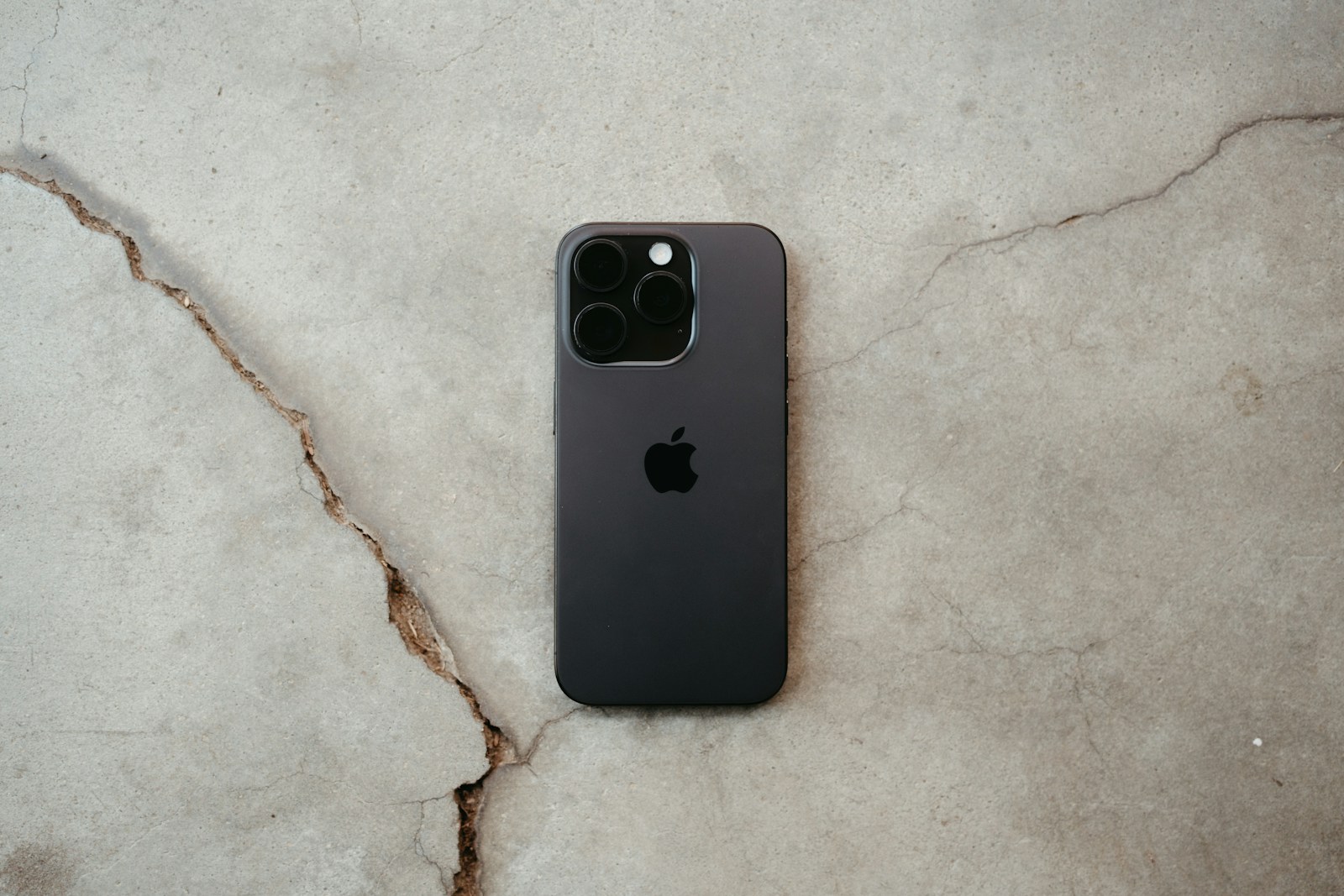The iPhone 17 series is shaping up to be one of Apple’s most intriguing smartphone generations in years. With new design strategies, expanded feature sets, and potential performance leaps, the 2025 lineup could mark a bold evolution for the iPhone brand. Here’s a deep dive into the latest rumors, informed speculation, and what tech insiders believe Apple is planning.
Major Shakeups in the Lineup: The iPhone 17 Air and the End of the “Plus”
Apple is expected to kill off the underperforming “Plus” model in favor of a sleeker, redesigned device known as the iPhone 17 Air. With a 6.6-inch screen and a noticeably thinner and lighter form factor, the Air model may resemble a cross between an iPhone and the iPad Air in philosophy — lighter, elegant, but still powerful.
Key Rumored Features of iPhone 17 Air:
- 6.6-inch OLED display with ProMotion (120Hz)
- Dynamic Island support
- Single 48MP rear camera
- A19 chip
- Aluminum build for reduced weight
The Air would mark a deliberate attempt to draw in users who prioritize portability without sacrificing screen size — a strategy that could attract both Android switchers and legacy iPhone owners looking to upgrade.

Design Overhaul for the Pro Models
The iPhone 17 Pro and Pro Max (possibly rebranded as “Ultra”) could introduce one of the most significant design changes since the iPhone X. Instead of a stainless-steel chassis, Apple may opt for a lighter aluminum frame, along with a hybrid back made from aluminum and glass.
One eye-catching design rumor involves a rectangular camera bump with rounded corners, a shift from the current diagonal lens arrangement. While not as radical as the iPhone X notch debut or iPhone 12’s flat edges, it shows Apple is exploring subtle evolutions in industrial design.
Display: ProMotion for All Models
For the first time, even base iPhone models could get access to 120Hz ProMotion displays, offering smoother scrolling, better responsiveness, and energy efficiency with dynamic refresh rates. This move would further blur the lines between standard and Pro models.
| iPhone 17 Model | Display Size | Refresh Rate | Display Type |
|---|---|---|---|
| iPhone 17 | 6.1-inch | 120Hz | OLED |
| iPhone 17 Air | 6.6-inch | 120Hz | OLED |
| iPhone 17 Pro | 6.3-inch | 120Hz | LTPO OLED |
| iPhone 17 Ultra | 6.9-inch | 120Hz | LTPO OLED |
Under the Hood: A19 and A19 Pro Chips
Performance upgrades are expected to be driven by Apple’s upcoming A19 chip for standard models and the A19 Pro for the iPhone 17 Pro and Ultra. Built on an even more efficient version of TSMC’s 3nm process, these chips may offer:
- Improved AI/ML performance for on-device Siri and camera enhancements
- Better thermal management, possibly introducing vapor chamber cooling in the Ultra model
- Power efficiency gains, boosting battery life without increasing size
Camera System: Pushing Mobile Photography to the Edge
The iPhone 17 Pro and Ultra models are likely to lean even harder into photography and videography. One standout rumor: triple 48MP cameras on the Ultra — a massive leap for mobile imaging. A 48MP Telephoto lens is also expected on the Pro models, refining zoom quality even further.
| Camera Feature | iPhone 17 | iPhone 17 Air | iPhone 17 Pro | iPhone 17 Ultra |
|---|---|---|---|---|
| Rear Camera | 48MP (1) | 48MP (1) | 48MP (3) | 48MP (3) |
| Front Camera | 24MP | 24MP | 24MP | 24MP |
| Telephoto Zoom | No | No | Yes (48MP) | Yes (48MP) |
| Dual Video Recording | No | No | Yes | Yes |
The 24MP front camera across the entire lineup will reportedly use a 6-element lens, improving clarity for FaceTime calls, selfies, and vlogs.
Video Features: Dual Recording and Content Creation Focus
Apple may lean into content creation with dual video recording, allowing users to capture footage from both front and rear cameras at the same time using the native Camera app. This would be a major win for vloggers, journalists, and casual creators who want to tell more dynamic visual stories.
Battery Life and Charging: Bigger Cells, Same Speeds

While no major charging speed upgrades are expected — the maximum wired speed remains at 35W, and MagSafe stays capped around 15W — Apple is reportedly redesigning the Ultra to be slightly thicker to fit a larger battery. With the more efficient A19 Pro chip and LTPO display tech, the iPhone 17 Ultra could offer one of the best battery performances ever in an iPhone.
What’s Still Unclear
While many details are surfacing, there are a few areas still under wraps:
- Will Apple introduce USB-C on all models, or keep it exclusive to the Pro line?
- Is Touch ID under-display finally coming, or is Face ID here to stay alone?
- Will the rumored periscope zoom from the 16 Pro Max carry over to the 17 Ultra?
With the iPhone 17 lineup expected to launch in September 2025, we’re likely to learn more throughout the summer as production ramps up and more leaks surface. Apple’s hardware evolution may be less about revolution this time — and more about giving every tier of the iPhone family a meaningful upgrade.
Key Takeaways
- The top iPhone model may be renamed from “Pro Max” to “Ultra” with exclusive cooling technology and premium features.
- A thinner “Air” design might join the lineup with similar processing power to standard models.
- Display sizes will remain large at around 6.9 inches for the highest-end model with improved internal hardware.
Design Enhancements
The iPhone 17 lineup is expected to feature significant design changes across all models. Apple appears to be focusing on premium materials, display improvements, and refined interface elements that enhance both form and function.
Aluminum Frames
The iPhone 17 series will likely feature new aluminum frame designs that improve durability while reducing weight. According to recent leaks, Apple is working on a specialized aluminum alloy that offers better drop protection than previous models.
The standard iPhone 17 may feature a matte aluminum finish, while the iPhone 17 Pro models could receive a more premium treatment with titanium-reinforced frames. This would continue Apple’s trend of differentiating materials between standard and Pro models.
The rumored iPhone Air might be the thinnest iPhone ever, with an ultra-light aluminum frame that could weigh significantly less than the iPhone 16. Engineers have reportedly solved thermal issues that previously prevented such a slim design.
Material changes may also include improved water and dust resistance, with potentially higher IP ratings across the lineup.
Dynamic Island
The Dynamic Island will undergo its most significant evolution since its introduction. All iPhone 17 models are expected to feature this interactive notification area, no longer limiting it to Pro models.
Recent leaks suggest the iPhone 17 Pro may get a redesigned Dynamic Island that’s more compact and less intrusive. The pill-shaped cutout could shrink by roughly 30%, freeing up more display space for content.
New functionality will likely be added, allowing the Dynamic Island to handle more complex interactions and display more useful information at a glance. Third-party app integration is expected to expand significantly.
Apple might introduce contextual awareness to the Dynamic Island, enabling it to change its behavior based on location, time of day, and user activities. This could make it more helpful in various situations.
Always-On Display
The Always-On display feature will see important upgrades across the iPhone 17 lineup. Most notably, this feature is expected to extend beyond the Pro models for the first time, appearing on standard iPhone 17 models as well.
Battery efficiency improvements will allow the Always-On display to show more information while using less power. Apple has developed new display technology that can maintain visibility at extremely low refresh rates.
Customization options will expand significantly, letting users decide exactly what information appears on their locked screen. This may include widgets, notifications, and app-specific data.
The iPhone 17 Pro and Pro Max models will likely receive a new display coating that reduces glare and improves visibility in bright sunlight. This anti-reflective layer would make the Always-On display much more useful outdoors.
Smart dimming technology might adjust brightness and information density based on ambient lighting and user attention.
Hardware Innovations
The iPhone 17 lineup is expected to feature significant hardware upgrades focused on processing power and connectivity. These improvements aim to enhance performance and network capabilities for users.
A19 Chip
The iPhone 17 series will likely be powered by Apple’s new A19 chip. This processor is expected to use TSMC’s 3nm process technology, offering better power efficiency and performance gains over the previous A18 chip.
Early benchmarks suggest the A19 chip could deliver up to 15% faster CPU performance and 20% better graphics processing. The neural engine may also see improvements to handle more advanced AI tasks locally on the device.
The iPhone 17 Pro and iPhone 17 Pro Max variants will probably get the full-featured A19 Pro chip with additional GPU cores. The standard iPhone 17 might receive a slightly modified version with fewer GPU cores.
Battery life is expected to improve thanks to the chip’s better efficiency, potentially adding 1-2 hours of regular use compared to previous models.
5G Modem
Apple is rumored to be using its first in-house 5G modem in the iPhone 17 lineup after years of depending on Qualcomm. This custom modem represents Apple’s push toward creating more of its own components.
The new modem should support mmWave and sub-6GHz 5G bands with improved power management. Tests indicate it may offer up to 30% better battery efficiency during network usage compared to current solutions.
Network speeds could reach theoretical maximums of 10 Gbps in ideal conditions, though real-world performance will depend on carrier infrastructure. The iPhone 17 Pro models might include enhanced antenna designs for better signal reception.
This shift to an Apple-designed modem gives the company more control over the integration between hardware and software, potentially enabling new features that weren’t possible with third-party modems.
Software Advancements
The iPhone 17 lineup is expected to bring major software improvements that will change how users interact with their devices. Apple plans to enhance both the core operating system and its AI capabilities.
iOS 19 Features
iOS 19 will likely debut with the iPhone 17, bringing several new features and improvements. The update is rumored to include a redesigned control center with more customization options. Users may be able to arrange controls in any order they want.
Apple might also introduce advanced health tracking features in iOS 19. These could work with the iPhone 17’s new sensors to monitor more health metrics without needing an Apple Watch.
Privacy enhancements are expected to be a major focus. New permission controls might give users more say over how apps use their data. The ProMotion support rumored for all iPhone 17 models will likely get special software optimizations in iOS 19.
The home screen may get more widget options and better organization tools. This could help users find apps faster and see more information at a glance.
Apple Intelligence Integration
Apple Intelligence is expected to be deeply integrated into the iPhone 17 lineup. The system will build on the AI features introduced in 2024, with more powerful on-device processing capabilities.
The A18 or A19 chip rumored for the iPhone 17 models will likely power these AI functions. This could make features like live translation, photo editing, and Siri responses much faster than before.
Apple may introduce smarter context awareness throughout the system. Your iPhone might learn your habits and predict what apps or information you need at certain times or places.
Camera software will likely see big improvements with Apple Intelligence. Better scene recognition and automatic adjustments could help users take perfect photos in any situation. The rumored camera redesign may work with new software to improve photo and video quality.
Siri is expected to get a major upgrade, with more natural conversations and better memory of past interactions.
Battery and Power Management
The iPhone 17 lineup may bring exciting improvements to battery life and power efficiency. Recent leaks suggest the iPhone 17 Pro Max might become Apple’s iPhone with the best battery life ever.
According to rumors, the iPhone 17 Pro Max (which some sources are now calling the “iPhone 17 Ultra”) will feature a physically larger battery. This change would require making the device slightly thicker than previous models.
The standard iPhone 17 and iPhone 17 Pro models may also see battery improvements, though not as dramatic as the Pro Max version. Apple likely aims to maintain or slightly improve battery performance across all models.
Power efficiency gains might come from:
- Improved chip architecture
- Better display technology
- More efficient cellular components
The iPhone 17 Pro models are rumored to include 12GB of RAM, which could impact power usage. While more RAM typically uses more power, Apple’s system optimization could offset this.
A potential concern exists for the rumored slim “iPhone 17 Air” design. Thinner phones usually have less space for batteries, which might affect battery life.
New power management features might include:
- Reverse wireless charging
- Faster wired charging speeds
- Improved MagSafe capabilities
Battery health features will likely continue to evolve with iOS improvements, giving users more control over power consumption and battery longevity.
New Product Line Introductions
Apple plans to expand its iPhone lineup with three new offerings for 2025-2026. These additions target different market segments with unique features and price points.
iPhone 17 Air Announcement
The iPhone 17 Air is set to be Apple’s thinnest iPhone ever. Expected to launch in September 2025, this ultra-slim device will likely feature a completely redesigned chassis measuring just 6mm thick.
The Air model will include an OLED display with ProMotion technology, enabling a variable refresh rate up to 120Hz. This helps balance smooth performance with battery efficiency.
Despite its thin profile, Apple hasn’t sacrificed camera quality. The device will reportedly feature a dual-camera system with improved sensors for better low-light photography.
Battery concerns for such a thin device are addressed through new energy-efficient components and improved power management in iOS 19. The phone will support MagSafe charging and potentially feature faster wired charging speeds.
Pricing is expected to position the Air between the standard iPhone 17 and Pro models, making it a premium option for those who value sleek design over some Pro features.
Affordable iPhone 16 Series
The iPhone 16E (Economy) will join the lineup as Apple’s new mid-range offering. This device aims to bridge the gap between the budget SE and standard models.
Key features of the 16E include:
- A13-sized display (6.1 inches)
- A18 chip (same as standard iPhone 17)
- Dual camera system
- Aluminum frame construction
- Standard 60Hz display
The 16E will lack some premium features found in higher-end models but maintains essential functionality. Apple is targeting a price point around $599, making modern iPhone technology more accessible.
The standard iPhone 16 models will also remain in production with modest price reductions after the iPhone 17 launch. This creates a more complete pricing ladder across Apple’s smartphone range.
iPhone SE 4 Potential Features
The iPhone SE 4 represents a significant upgrade to Apple’s entry-level offering. Moving away from the iPhone 8-based design, the new SE will adopt an iPhone 14-inspired look with a larger 6.1-inch display.
Face ID will finally replace Touch ID, marking a complete transition to facial recognition across all current iPhone models. The device will use the A17 or A18 chip, ensuring several years of iOS updates.
Camera improvements include a single 48MP rear camera—a substantial upgrade from previous SE models. Video capabilities will match the iPhone 15, supporting 4K recording at 60fps.
The SE 4 will adopt USB-C charging and support MagSafe accessories. Battery life will see notable improvements thanks to the larger chassis and more efficient components.
Pricing is expected to start around $429-$479, maintaining its position as the most affordable entry point to a new iPhone.
Pro Models Vs. Regular
The iPhone 17 lineup is shaping up to have clear differences between its standard and premium models. Based on rumors, Apple plans to maintain its tiered approach but with some interesting changes.
iPhone 17 Pro models may feature a unique half-glass, half-aluminum exterior design. This would mark a notable shift from the current all-glass backs seen in the iPhone 16 Pro.
Screen sizes will likely continue to be a key differentiator. The standard iPhone 17 is expected to keep its smaller display, while the iPhone 17 Pro Max might actually be renamed to “iPhone 17 Ultra” according to some rumors.
Price Structure:
- iPhone 17: Base price
- iPhone 17 Air: Mid-tier
- iPhone 17 Pro: Premium
- iPhone 17 Pro Max/Ultra: Highest price point
Camera systems will remain a major selling point for Pro models. The Pro versions are expected to maintain their camera advantage with better sensors and likely more lenses than regular models.
The rumored iPhone 17 Air may come with just one speaker, while the Pro Max could keep its dual-speaker setup for better audio.
Performance will follow Apple’s usual pattern: all models will likely share the same chip generation, but Pro models may get extra GPU cores or RAM for better performance in demanding tasks.
Battery life differences are expected too. The larger Pro models traditionally offer better battery life due to their bigger size, a trend that will likely continue with the iPhone 17 lineup.
Comparison with Predecessors
The iPhone 17 lineup brings several notable changes from previous generations. Based on recent rumors, the iPhone 17 models will feature a design shift from their iPhone 16 counterparts.
One major improvement is that ProMotion display technology will expand to more models. Unlike the iPhone 16 series where only Pro models had this feature, both iPhone 17 and iPhone 17 Air are expected to include ProMotion support.
The iPhone 17 Pro Max may see a significant thickness increase compared to the iPhone 16 Pro Max, according to leaker Ice Universe. This change hints at possible hardware upgrades inside.
Camera design is getting a makeover too. Leaked machined parts for the iPhone 17 Pro suggest a camera redesign, possibly including advanced periscope housing for better zoom capabilities.
The new iPhone 17 Air model will reportedly feature an aluminum and glass design, which differs from the premium materials used in Pro models. It may also come with just one speaker, while the iPhone 17 Pro Max retains dual speakers.
Apple appears to be changing its naming strategy as well. The lineup might see a complete overhaul, with the highest-end model potentially renamed from Pro Max to something different.
The iPhone 16E won’t have a direct successor in the 17 series, as Apple shifts to a different model structure focused on the new Air variant.
Market Strategy
Apple’s strategy for the iPhone 17 lineup shows a clear shift toward market segmentation with new naming conventions and targeted features. The company aims to strengthen its position in both premium and mid-range markets.
Positioning Against Competitors
Apple appears to be replacing the iPhone 17 Pro Max with an “Ultra” model, creating clearer distinction at the top end. This move likely aims to counter Samsung’s Ultra devices and other premium Android flagships.
The possible introduction of an iPhone 17 “Air” or “Slim” model suggests Apple is targeting the thin-and-light segment that competitors like Samsung and Xiaomi have been exploring.
A major competitive advantage appears to be the upgrade of all iPhone 17 models to 120Hz displays. This brings the baseline models up from 60Hz, matching what many Android competitors already offer.
Apple’s design changes, including the rumored camera bar, may help the iPhone 17 stand out visually from competitors that have adopted similar looks in recent years.
Target Demographics
The iPhone 17 lineup seems carefully crafted to appeal to distinct user groups:
The potential iPhone 17 Ultra targets luxury buyers who demand cutting-edge technology regardless of price. These users likely upgrade frequently and use their devices for professional content creation.
The rumored iPhone 17 “Air” or “Slim” model appears aimed at fashion-conscious users who prioritize design and portability over maximum performance. This demographic often overlaps with MacBook Air users who value thin profiles.
The standard iPhone 17 with its upgraded 120Hz display targets mainstream buyers who want premium features at a more accessible price point.
Young professionals appear to be a key demographic for the entire lineup, with features like LTPO displays and larger batteries addressing common pain points like battery life and screen quality.
Frequently Asked Questions
iPhone 17 rumors point to several major changes including a new “Air” model, camera redesign, and performance upgrades. Many questions surround Apple’s upcoming phone lineup expected to launch in fall 2025.
What can we expect from the design of the iPhone 17?
The iPhone 17 lineup may feature a significant design overhaul. Most notably, reports suggest Apple will introduce an iPhone 17 Air model with a thinner profile than standard models.
Leaked machined parts show the iPhone 17 Pro may feature a camera redesign with a camera bar rather than the traditional square camera island. This would mark the first major camera housing change in several generations.
What are the potential new features anticipated for the iPhone 17?
ProMotion display technology may expand across the entire iPhone 17 lineup. Multiple rumors indicate that both the iPhone 17 and iPhone 17 Air models will include ProMotion support, previously reserved only for Pro models.
The standard iPhone 17 models will likely receive chip upgrades to either the A18 or A19 processor. This suggests Apple continues to prioritize performance across all models rather than reserving the newest chips for Pro devices.
Will the iPhone 17 incorporate any new advances in camera technology?
The camera system appears to be getting a notable redesign based on leaked parts. The new camera bar design might hint at additional sensors or improved camera capabilities.
Some speculation suggests Apple could add new sensors under the camera bar, though these details are harder to confirm from early leaks. Camera improvements typically focus on low-light performance, zoom capabilities, and video recording features.
How might the iPhone 17 compare to previous models in terms of performance?
Performance upgrades will likely center around the new A-series chip, either A18 or A19 depending on Apple’s naming convention. The iPhone 17 Air will reportedly feature the same chip as the baseline iPhone 17.
Pro models traditionally receive additional RAM and graphics performance enhancements. Apple tends to focus on specific use cases like computational photography, gaming, and AI features to showcase performance improvements.
What price range is projected for the different models of the iPhone 17?
Pricing information remains limited at this stage. The introduction of the Air model may shift the pricing structure of the entire lineup.
Typically, new model variations like the rumored Air could either replace an existing price point or create a new tier between current models. Apple’s pricing strategy usually maintains similar price points year over year with new features justifying the cost.
Are there any innovative materials or manufacturing processes introduced with the iPhone 17?
Information about new materials or manufacturing processes is sparse in current rumors. The thinner design of the Air model would require engineering adjustments to maintain durability.
Apple continues to emphasize sustainability in its manufacturing. This could mean increased recycled materials or more efficient production methods, though specific details won’t likely emerge until closer to the fall announcement.







